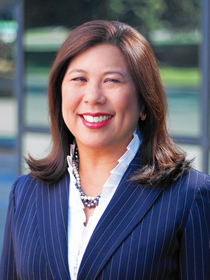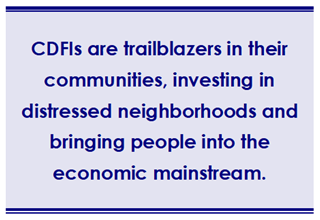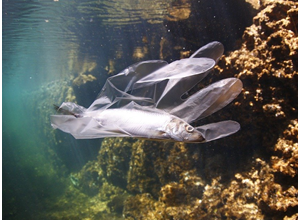You can also view this newsletter as a PDF.

CDFIs Poised to Serve Banking Needs for
Underserved Communities in Need of Capital
 The COVID-19 pandemic has devastated many economic sectors and businesses in California, causing soaring unemployment, volatile financial markets, and uncertain tax revenue. It also has also shined light on the fact that the state’s economy does not work for everyone. While lack of equal access to quality health care has long been acknowledged, the pandemic has revealed how people of color, low-wage workers, and small and minority owned businesses face similar barriers in accessing much needed capital.
The COVID-19 pandemic has devastated many economic sectors and businesses in California, causing soaring unemployment, volatile financial markets, and uncertain tax revenue. It also has also shined light on the fact that the state’s economy does not work for everyone. While lack of equal access to quality health care has long been acknowledged, the pandemic has revealed how people of color, low-wage workers, and small and minority owned businesses face similar barriers in accessing much needed capital.
Assembly Bill 310 of 2019 (Santiago) proposed creation of a state public bank to serve these communities. The bill was held in the State Senate. Over the past decade, several states and cities, including San Francisco, have conducted public bank feasibility studies. However, these efforts have shown the risks and costs far outweigh the assumed benefits.
California does have an existing network of banks in underserved areas that – with an infusion of capital and technology – could meet the challenges of helping vulnerable communities rebuild from the COVID-19 pandemic.
There are more than 80 California Development Financial Institutions (CDFI) and Minority Depository Institutions (MDI) statewide. These private-sector organizations use capital from banks, philanthropists, investors, and government to drive development and economic growth in underserved communities.
 Under the Community Development Banking and Financial Institutions Act of 1994, the federal government created a CDFI Fund. Administered by the Department of the Treasury, the Fund promotes economic revitalization and community development by investing in and assisting CDFIs through equity investments, capital grants, loans, and technical assistance support for organizational capacity-building. Grants are distributed through a competitive process that, in most cases, requires a CDFI to provide at least a one-to-one match of non-federal funds to receive federal assistance. The Fund rewards banks and thrift associations for making investments in CDFIs and distressed communities through its Bank Enterprise Award Program. The 2002 New Markets Tax Credits Program also encourages private sector investment by offering tax credits for qualified community development investments.
Under the Community Development Banking and Financial Institutions Act of 1994, the federal government created a CDFI Fund. Administered by the Department of the Treasury, the Fund promotes economic revitalization and community development by investing in and assisting CDFIs through equity investments, capital grants, loans, and technical assistance support for organizational capacity-building. Grants are distributed through a competitive process that, in most cases, requires a CDFI to provide at least a one-to-one match of non-federal funds to receive federal assistance. The Fund rewards banks and thrift associations for making investments in CDFIs and distressed communities through its Bank Enterprise Award Program. The 2002 New Markets Tax Credits Program also encourages private sector investment by offering tax credits for qualified community development investments.
Mainstream financial institutions invest their own capital directly in CDFIs, receiving Community Reinvestment Act credits and potential cash rewards under the CDFI Fund’s Bank Enterprise Award Program. In return, CDFIs help to create a future market for mainstream financial institution products and services by incubating businesses. CDFIs are trailblazers in their communities, leading the way in investing in distressed urban and rural neighborhoods and bringing people into the economic mainstream.
CDFIs leverage public- and private-sector resources into distressed communities to support an array of community development activities including housing for low-income people, businesses owned by low-income people, basic financial services, commercial facilities that promote job creation or retention, and technical assistance.
CDFIs cultivate specialized knowledge about the communities in which they do business. They forge deep relationships with their customers and community leaders. This translates into a willingness and commitment to provide individualized service, and specialized programs often considered too time-consuming or costly for mainstream financial institutions to implement.
Rebuilding disinvested communities and making loans to people with limited or poor credit histories requires more than simply providing access to conventional loans. It requires the flexibility to adapt lending guidelines to the needs of borrowers; to accept unconventional collateral for loans; and to provide education, training, and assistance to potential borrowers.
The state provides support to CDFIs and MDIs through the California Infrastructure and Economic Development Bank (I-Bank). In the fall of 2020, I-Bank initiated a new public-private effort to support CDFIs in making more loans to small businesses as they reopen and recover from the pandemic by providing $25 million as seed money for the California Rebuilding Fund. This program gives CDFIs and MDIs the capital to underwrite small business loans and COVID-19 relief grants in underserved communities. The Small Business Disaster Relief Loan Guarantee Program, administered by I-Bank’s Small Business Finance Center, partners with Financial Development Corporations to provide loan guarantees and direct loans for small businesses in low-wealth and immigrant communities that face barriers in access to capital. In addition, California’s $2.5 billion Small Business COVID-19 Relief Grant Program, funded by the state and administered by the California Office of the Small Business Advocate, provides grants from $5,000 to $25,000 to eligible small businesses including those in disadvantaged communities.
If these unique public-private initiatives prove successful in serving small business capital needs, Controller Yee hopes to see the legislature increase their state funding.
The Milken Institute Center for Financial Markets – a nonpartisan, nonprofit policy think tank – soon will release a report detailing a set of strategies for how stakeholders ranging from big banks, corporations, and philanthropies to federal, state, and local governments can enhance racial equity by partnering with CDFIs and MDIs. By repairing these institutions’ balance sheets, restoring access to capital for underserved communities, and reimagining the banking system to ensure equitable participation, the Milken Institute hopes the implementation of these strategies will support a future of equitable post-pandemic recovery and access to capital.
These proposals by Milken echo Controller Yee’s prior legislative testimony on the need for greater investment in CDFIs and MDIs, to help them provide more loans and investments in their communities while upgrading technology to make their own business processes more efficient.
Controller Yee recognizes the need to examine how mainstream banks in California are supporting CDFIs and MDIs in their mission to provide capital to underserved communities. She is hopeful national banks will follow through on their pledge to commit a percentage of profits, as well as technological support and mentoring, to CDFIs. If state banks follow suit, their combined efforts will help CDFIs and MDIs provide specialized financial services to individuals and businesses that have traditionally lacked access to credit.
Controller Yee continues to urge legislators to learn about and support this effort, in order to help direct the most robust, sustainable, and targeted economic development support to underserved communities in need of capital.
OPC Leads California Effort to Rein in Ocean Plastics Pollution
 Back in March 2019, Controller Yee shared the World Economic Forum’s prognostication that – if companies keep producing plastics at predicted rates, and people keep disposing of them improperly – the amount of plastic pollution in oceans would outweigh total fish abundance by 2050.
Back in March 2019, Controller Yee shared the World Economic Forum’s prognostication that – if companies keep producing plastics at predicted rates, and people keep disposing of them improperly – the amount of plastic pollution in oceans would outweigh total fish abundance by 2050.
In March 2021, California’s Ocean Protection Council (OPC) released its initial top ten recommendations to address plastic pollution in California’s coastal and marine ecosystems. These recommendations were vigorously discussed, amended, and, ultimately, endorsed by OPC at its February 2021 meeting. Collectively, they focus on those strategies that can achieve the greatest impact and build for future actions.
The recommendations are part of an overall effort to develop a statewide strategy on plastics and microplastics that builds on the priorities of the California Ocean Litter Prevention Strategy. OPC is taking the lead on integrating the values and best practices of key state departments with a role in addressing marine plastics pollution.
This pervasive problem affecting marine life, human health, and the economy has been aggravated, like so much in the past year, by the COVID-19 pandemic. Disposable masks, gloves, and other types of personal protective equipment (PPE) – while safeguarding human lives – have joined the many plastics finding their way into the marine environment. On beaches once strewn with cigarette butts and food wrappers, PPE increasingly is the most common find. This debris is just one wave away from entering the ocean, serving as a reminder that proper disposal also is key to managing single-use plastics.
Numerous studies have shown that reliance on single-use plastics also means increased carbon dioxide. Approximately 80 percent of plastic pollution comes from land-based sources. The bottles from which people drink, the bags they use to carry groceries, and the packaging contained in retail shipments all contribute to this growing problem. Plastics are lightweight and are easily blown into streams and oceans. About eight million metric tons of plastic enter the ocean annually.
Once introduced into the marine ecosystem, plastics degrade slowly (over as many as 700 years) and leach toxic chemicals into the water. Marine species ingest smaller particles, which biomagnify up the food chain and eventually end up on dinner plates. A 2015 study of fish and shellfish for sale in markets found 25 percent of fish sampled in California contained debris from human activity in their digestive tracts.
Around the world, there are five massive patches of plastic in oceans. The one between California and Hawaii is the size of Texas. Marine debris is not just a problem for the surface of the ocean. Debris also is found on the deep ocean floor. An extensive survey extending down 4,000 meters off the coast of Monterey found that debris was more common in the parts of Monterey Canyon more than 2,000 feet deep. Items found included plastic bags, glass bottles, and fishing equipment.
Building on lessons learned through initiatives such as the “Bottle Bill” of 1987 and the statewide ban of single-use plastic bags, OCP is working to address the scourge of plastics pollution in collaboration with its sister agency, the Department of Resources Recycling and Recovery, or CalRecycle, and in concert with concerned elected officials. The legislature is considering the Plastic Pollution Producer Responsibility Act [Senate Bill 54 (Allen)] to provide further guidance on tackling the problem of single-use disposable packaging and food service ware.
Controller Yee believes California has the opportunity to amplify these efforts by increasing markets for recycled materials. Addressing the reality of plastics entering natural environments will require an improved waste-management infrastructure, increased recycling, and reduced reliance on single-use plastic products. California has a long and successful program to reduce trash. Now leaders are taking critical steps to build on that success.